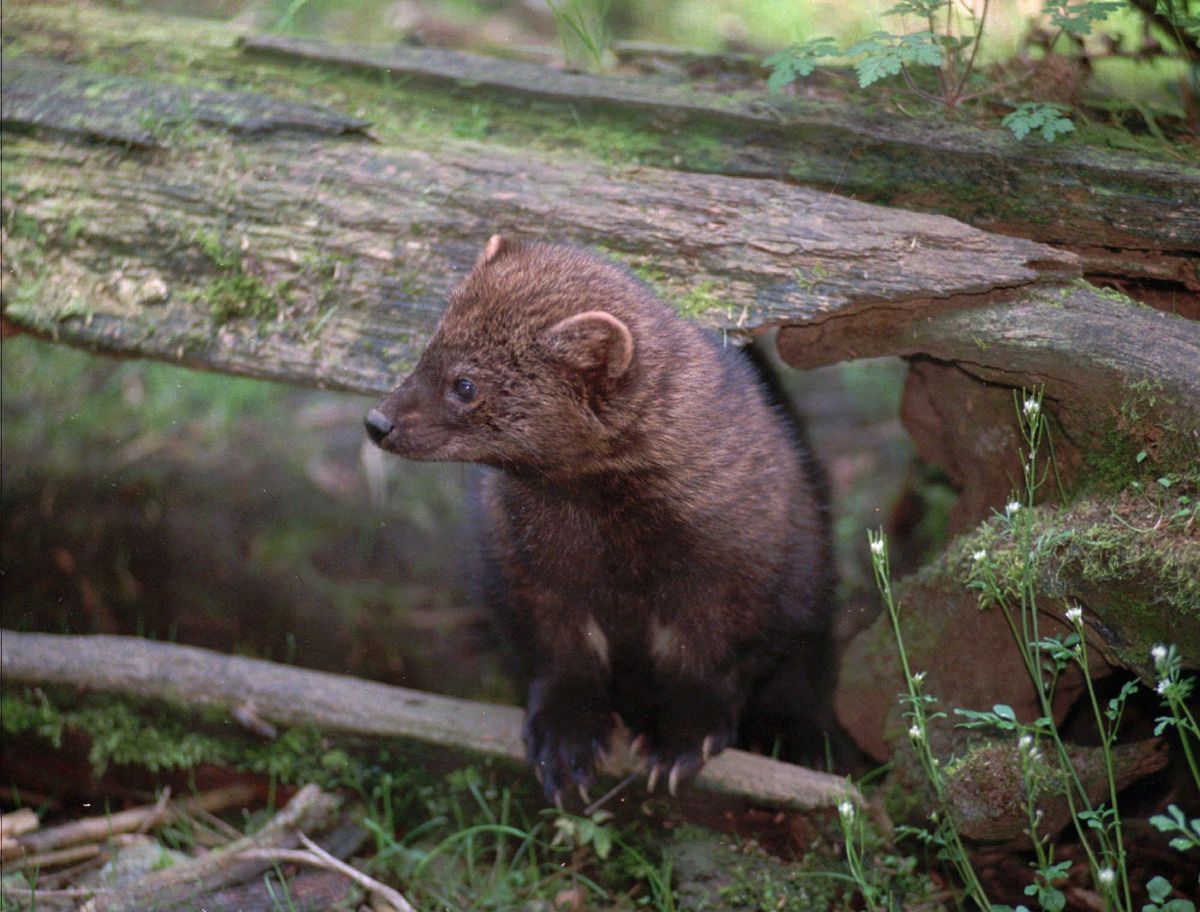Cameras track rebounding species

Washington’s wild areas are becoming more diverse and interesting as several furbearing species – wolverine, fisher and sea otter – slowly recover some of their former range.
Here are three updates.
A wolverine, one of the rarest and least-known mammals in North America, was photographed recently by a remote camera at 6,100 feet on the northwest slope of Mount Adams.
Only about 20 wolverines are known to exist in Washington, virtually all of them in the North Cascades. Finding a wolverine so far south was a pleasant surprise to federal wildlife researchers.
Females come into mating season only about once every two years, at best, and the animals stay away even from each other the rest of the time.
Young males, in particular, are known to go on long solo walks for hundreds of miles to stake out new territory, or search out a mate.
Growing to 3 feet long and weighing up to 40 pounds, wolverines are the largest land-based animal in the weasel family — sea otters beat them in size.
Wolverines scavenge carcasses, which they can smell from great distances. They have powerful jaws, enabling them to snap through frozen bones and carrion. They can dig, claw and bite, even through dirt and wood, to get at a dead or hibernating animal under many feet of snow.
A fisher family was photographed by a remote camera in Olympic National Park in late May, the first documentation of a female having kits on the Olympic Peninsula since reintroduction program was started with a release of 18 fishers in 2007.
Fishers disappeared from Washington sometime in the mid-1900s because of over trapping and habitat loss.
Last year, another 49 fishers were reintroduced to the park.
In May, a sequence of motion-activated photographs showed a radio-collared female fisher climbing a suspected den snag four times to carry away kits and move them to a new location.
A total of about 100 fishers will be translocated from southern British Columbia to the peninsula over a three-year period.
Pacific fishers, related to the smaller pine martens and larger wolverines, are about the size of a house cat and rank as the second-largest terrestrial North American member of the weasel family
The only forest carnivore known to hunt porcupine with regular success, fishers can help prevent forest overgrazing by porcupines.
A sea otter photographed feeding and snoozing in Depoe Bay this summer is the first confirmed sighting in more than a century on the central Oregon Coast.
“He’s absolutely hilarious to watch,” says Morris Grover of the Whale Watching Center, who snapped the identifying photograph Feb. 18.
“We’ve seen him crack a crab open on his chest, then tying himself up in kelp for a nap.”
Sea otters are listed as endangered species having long been the target of humans for their fur, which contains a million hairs per square inch.
A reconstituted otter population along the coast could help restore lagging forests of sea kelp, which are key to the food chain for everything from black rockfish and chinook to gray whales.
Sea otters once fed heavily on sea urchins, which now dominate the coastal ocean floor and mow through kelp beds. The loss of kelp removes vital refuges for black rockfish and the plankton that are the cornerstone for mysidacea and other shrimp-like creatures eaten by everything from young salmon to whales.
European and Russian exploitation began shortly after Vitus Bering discovered a large otter population along Alaska’s Aleutian Islands in 1741, records show.
By the late 1700s, the Russian American Fur Company had an exclusive charter from the Czar of Russia to kill sea otters, whose pelts were coveted for coats and stoles in Russia, China and Europe.
The last one killed in Oregon was in 1906 at Otter Rock, records show. By 1911, an international treaty banned all sea otter hunting.
The otter photographed this year could be a visitor from populations in California or Washington, Rice says. Or it could be from a small population living in Oregon.
•Incidentally, river otters – the smaller cousin to the sea otter – are occasionally seen in the Spokane and Palouse river areas. State biologists observed an otter running across a fairway at Qualchan Golf Course near Hangman Creek last week.